Have you heard “fall is for planting”? This saying has been long loved by the nursery industry for encouraging folks to start planting in the fall for better spring growth. As gardening and landscape enthusiasts, we agree!
Why is Fall for Planting?
Yes, you should wait until the spring to plant warmth-loving bulbs such as elephant’s ear and gladiolus. However, cold hardy plants such as trees and shrubs appreciate more time to grow and establish a root system before the heat of summer, making fall an ideal time to get them in the ground.
If the tree and shrub roots have ample time to grow throughout fall and winter, they will be better established than if they are planted in the spring. The same is true for some types of cool-season turfgrass, such as Tall Fescue, and bulbs, such as tulips.
“Better established roots” means a larger root system. The greater the expanse of a root system, the easier it is to find water in the soil. Therefore, plants that go in the ground during fall have better drought tolerance during their first summer growing season than those planted in the spring.
Speaking of water, your fall plantings will still need it to establish their roots. However, it is easier to ensure your fall plantings get enough water with mild fall temperatures rather than rising spring and summer temperatures.
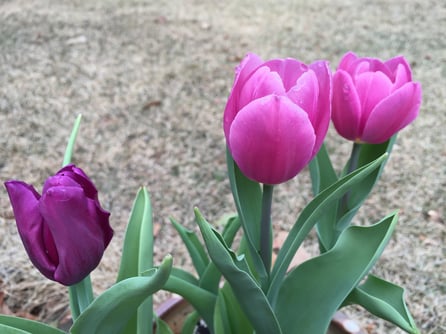
Tulip bulbs establish strong root systems if planted in the fall.
In this blog post, we'll talk about the best practices for planting trees and shrubs in the fall.
If you're interested in installing turfgrass in the fall or even the winter, read about the details of how to lay dormant sod.
Option 1: Hole-by-Hole in Native Soil
Your trees and shrubs need room for their roots to grow outward instead of down. Therefore, start by digging a hole that is no deeper than the height of the root ball and at least twice as wide as the root ball of your plant. (This is important because most roots grow horizontally rather than as the famous “tap root.”)
After placing your plant in the ground, backfill the hole with native soil. It’s important to use the same soil you removed from the hole and avoid adding amendments to the soil itself. If you amend the soil, the roots won’t want to leave the hole, which isn’t healthy for your plant. When filling, don’t compact the soil too much. Roots need oxygen and room to grow within.
On top of your native soil, topdress with an organic compost such as Soil3 to add nutrition and improve the soil from the top down. Leave a water-holding basin at the roots and water thoroughly.
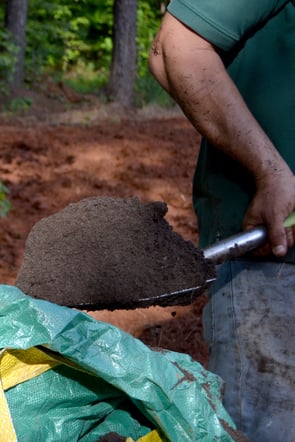
When planting trees and shrubs, backfill the hole with native soil then topdress with Soil3 organic compost.
Finally, add a layer of mulch on top of your compost. Mulch, bark, or straw will reduce the number of weeds sprouting from your freshly turned native soil and help seal in moisture.
Important: Soil3 is not a mulch. It must go under mulch for the health of new plantings.
Now, you can consider build a dry stack stone wall to add some character to the area around your newly planted tree.
Option 2: Planting a Whole New Area
If fall is for planting a variety of hardy plants for a new look at your yard, you can follow a slightly different process than planting hole-by-hole.
Start by tilling up an entire area where you would like to plant. Then, incorporate your Soil3 compost into the soil with your tiller or even a rake.
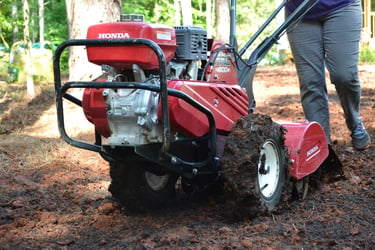
If planting an entire area, till up the native soil then incorporate organic compost before planting.
Plant trees, shrubs, perennials, and everything else your heart desires. Be sure to research if you’re within the correct time window for your chosen plant.
Finally, add mulch, bark, or straw to welcome moisture and deter weeds.
Keep in Mind
There are several details to keep in mind when planting trees and shrubs. Fine Gardening Magazine published guidelines to planting trees and shrubs in their article on Planting the Right Way.
You want to get your plants in the ground and provide plenty of water before the ground freezes if the ground is prone to freezing in your area (in many areas of the South, the ground doesn’t freeze except for a few days and then only shallowly). Check your local temperature averages and typical frost and freeze dates to get an idea of when that might hit when making your planting schedule.
Gather Your Supplies
Here’s a list of trees and shrubs we love for planting in the winter:
- Trees
- Japanese Maple
- Gingko
- Red Cedar
- Rebud
- Flowering Dogwood
- Shrubs
- Hydrangeas
- Mountain Laurel
- Azalea
- Mountain winterberry
- Rhododendrons
All you need to finish the job is Soil3 organic compost!

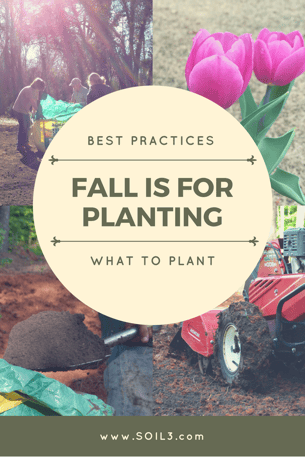
![Building an Easy Flat Trellis for Your Raised Bed Garden [Video]](https://blog.soil3.com/hs-fs/hubfs/trellis_for_video.jpg?width=300&name=trellis_for_video.jpg)
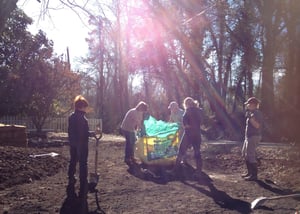

Did this help you out? Have any questions for clarity? Leave a comment below!